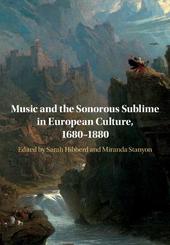
|
Music and the Sonorous Sublime in European Culture, 1680-1880
Paperback / softback
Main Details
Description
The sublime - that elusive encounter with overwhelming height, power or limits - has been associated with music from the early-modern rise of interest in the Longinian sublime to its saturation of European culture in the later nineteenth century and beyond. This volume offers a historically situated study of the relationship between music, sound and the sublime. Together, the authors distinguish between the different aesthetics of production, representation and effect, while understanding these as often mutually reinforcing approaches. They demonstrate music's strength in playing out the sublime as transfer, transport and transmission of power, allied to the persistent theme of destruction, deaths and endings. The volume opens up two avenues for further research suggested by the adjective 'sonorous': a wider spectrum of sounds heard as sublime, and (especially for those outside musicology) a more multifaceted idea of music as a cultural practice that shares boundaries with other sounding phenomena.
Author Biography
Sarah Hibberd holds the Stanley Hugh Badock Chair of Music at the University of Bristol. Her research focuses on opera and other forms of music theatre in Paris and London during the first half of the nineteenth century, and her publications include French Grand Opera and the Historical Imagination (Cambridge, 2009). She is co-editor of the Cambridge Opera Journal. Miranda Stanyon is a lecturer in Comparative Literature at King's College London. She works on eighteenth-century and nineteenth-century literary culture and has published widely on music and sound, aesthetics, and emotions history, including articles for Modern Philology, the Journal of the Royal Musical Association, Huntington Library Quarterly, German Quarterly and Studies in Romanticism.
Reviews'... carefully presented ...' Agathe Sueur, translated from Revue de musicologie
|